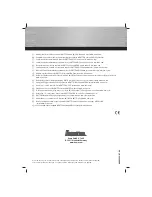
3
and a four-wire serial port.
The CY7C63743-PXC
periodically reads the ADNS-
6000’s Delta_X and Delta_Y
registers to obtain any
horizontal and vertical motion
information happening as a
result of the mouse being
moved. The output of the
ADNS-6000 optical sensor is
4-wire serial port.
This motion information will
be reported to the PC to
update the position of the
cursor. The advantages of
using ADNS-6000 optical
sensor are the best tracking
accuracy, flexibility of
programming the optical
sensor via the SPI port, and
the automatic frame rate
feature (1000fps to 6400fps).
Besides, ADNS-6000 optical
sensor performs excellent
tracking on difficult surfaces
which conventional Led based
technology is unable to track
such as glossy and smooth
surfaces. In addition,
Burst
mode
is another special serial
port operation mode that may
be used to reduce the serial
transaction time for three
predefined operations: motion
read and SROM download and
frame capture. The speed
improvement is achieved by
continuous data clocking to or
from multiple registers.
Motion Read
is activated by
reading the Motion_Burst
register. The ADNS-6000 will
respond with the contents of
the Motion, Delta_X, Delta_Y,
SQUAL, Shutter_Upper,
Shutter_Lower and
Maximum_Pixel registers in
that order.
SROM download
uses Burst Mode to load the
Agilent-supplied firmware file
contents into the ADNS-6000.
The firmware file is an ASCII
text file with each 2-character
byte on a single line.
Frame
Capture
is a fast way to
download a full array of pixel
values from a single frame.
To learn more about sensor’s
technical information, please
visit the Agilent web site at:
http://www.semiconductor.agilent.com
Mouse Optics
The motion of Z-wheel is
detected using the traditional
method by decoding the
quadrature signal generated by
optical sensors. Two
phototransistors are connected
in a source-follower
configuration. An infrared LED
shines, causing the
phototransistors to turn on. In
between the phototransistors
and LED is a pinwheel that
turns on the mouse ball
rollers. The fan of this
pinwheel is mechanically
designed to block the infrared
light such that the
phototransistors are turned on
and off in a quadrature output
pattern. Every change in the
phototransistor outputs
represents a count of mouse
movement. Comparing the last
state of the optics to the
current state derives direction
information. As shown in
Figure 2 below, traveling along
the quadrature signal to the
right produces a unique set of
state transitions, and traveling
to the left produces another
set of unique state transitions.
In this reference design, only
the motion at the Z-wheel is
detected using this method.
Figure 2. Optics Quadrature Signal Generation
Mouse Buttons
Mouse buttons are connected
as standard switches. These
switches are pulled up by the
pull up resistors inside the
microcontroller. When the user
presses a button, the switch
will be closed and the pin will
be pulled LOW to GND. A
LOW state at the pin is
interpreted as the button being
pressed. A HIGH state is
interpreted as the button has
been released or the button is
not being pressed. Normally
the switches are debounced in
firmware for 15-20ms. In this
reference design there are
three switches: left, Z-wheel,
and right.
USB and PS/2 Connection
The CY7C63743-PXC has a
configuration register that
switches control from the SIE
to manual control on the D+
and D- pins. This allows the
firmware to dynamically
configure itself to operate as a
USB or PS/2 mouse allowing
signaling lines to be shared
without using extra GPIO pins
for PS/2 operation. The
firmware for this reference
design will automatically detect
the host topology (USB or PS/
2) at plug-in and will
configure itself for operation
on that bus. If a USB host
connection is detected then the
firmware will enable the VREG
pin, such that the 1.3k ohm
resistor connected to the D-
line can be pulled up to 3.3V.
It is this action that causes the
host to recognize that there is
a low-speed USB peripheral
attached. The connections for
the connectors are shown in
Figure 3 below.
Содержание ADNK-6003
Страница 17: ...17 Figure C2 PCB Schematic Top Layer Figure C1 PCB Schematic Bottom Layer Appendix C PCB Layout...
Страница 18: ...18 Figure C4 PCB Schematic Bottom Overlay Figure C3 PCB Schematic Top Overlay...
Страница 19: ...19 Appendix D Base Plate Feature Figure D1 Overall view of base plate...




































